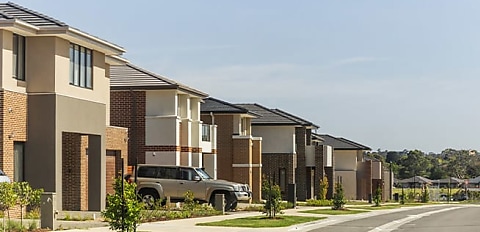While reduced rates will certainly make it easier for prospective buyers to enter the property market, persistent issues with supply are ever-present.
As outlined by Master Builders Australia CEO Denita Wawn, rate cuts aren’t the “silver bullet” that will fix the housing crisis. More changes are needed to deliver housing for the population.
“The RBA’s cut is positive news, but interest rates alone [are] not the silver bullet to fix the housing crisis. Without government action, housing affordability and business costs will remain a major challenge,” said Wawn.
“The Federal Government must remove barriers to productivity and bring down construction costs to ensure new projects stack up.”
Housing costs have reportedly surged by 40 per cent in the last five years, said Master Builders. Meanwhile, build times have stretched by 80 per cent in the last 15 years.
HIA chief economist Tim Reardon shared similar sentiments to Master Builders, saying that rate cuts won’t deliver the 1.2 million homes promised.
“While today’s decision could act as a catalyst for more on-the-ground home building activity, it will not be sufficient to achieve the Australian government’s target of 1.2 million homes over five years. Even with the ongoing expectation of cuts later in the year, there are far more important structural reforms required of policymakers for Australia to address its housing crisis,” said Reardon.
“Up to half the cost of a house and land package in Australia is because of government taxes, costs and restrictions. Tax reform must address the burden of stamp duty on aspiring homeowners and the punitive surcharges imposed on the very investors needed to address Australia’s rental crisis.
“Shovel-ready land and associated infrastructure, especially transport and utilities, need to be brought to market faster. Planning frameworks need to be more accommodative of higher density housing and approvals processes need to be streamlined and simplified.”
According to HIA, to meet the 1.2 million home target over the next five years, an extra 83,000 workers will need to be injected into construction trades – a 30 per cent boost on the current workforce.
“The skilled migration system needs to be simplified and fit-for-purpose and there needs to be an ongoing domestic workforce development plan that supports apprentices, the public and private organisations that train them, and the businesses that supervise and provide on-site experience for them,” said Reardon.
“Failure to address these constraints on home building will not only fail to address Australia’s housing crisis but also act as a major drag on economic growth, productivity and living standards.”
The Real Estate Institute of Queensland (REIQ) agreed that addressing shortages is key. Throughout the state, there are challenges, with other states faring even poorer.
“If we don’t address Queensland’s housing supply constraints, the positive impact of lower interest rates will be negated by continued upward pressure on prices. Queensland’s real estate sector has proved remarkably resilient compared to southern states with sustained growth,” said REIQ CEO Antonia Mercorella.
“Looking at the capital cities, Brisbane property values increased 0.3 per cent in January, while values nationwide were unchanged, and Sydney and Melbourne property values fell 0.4 and 0.6 percent respectively, according to CoreLogic.
“A rate cut could bring back some investors into the market who may have been discouraged by prevailing interest rates and were waiting for a rate cut.”
[Related: RBA hands down first rate call of 2025]

